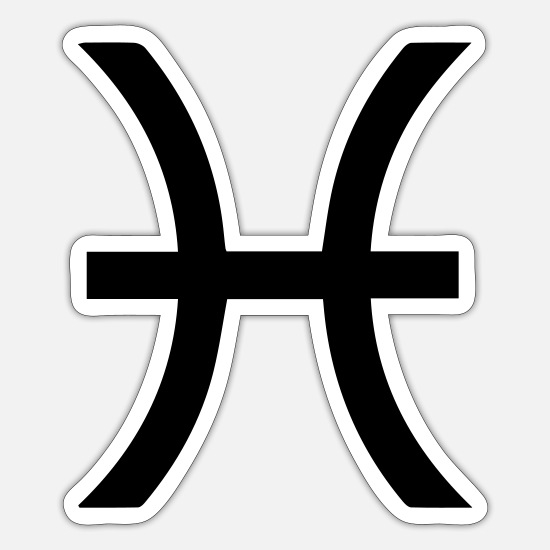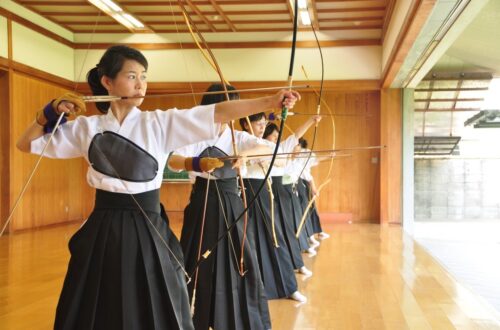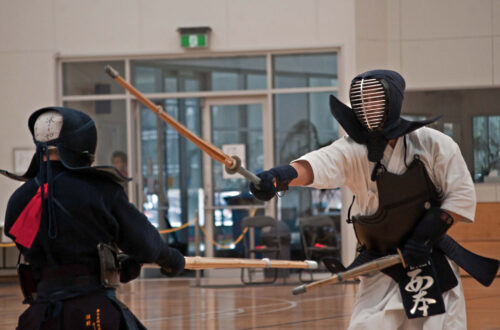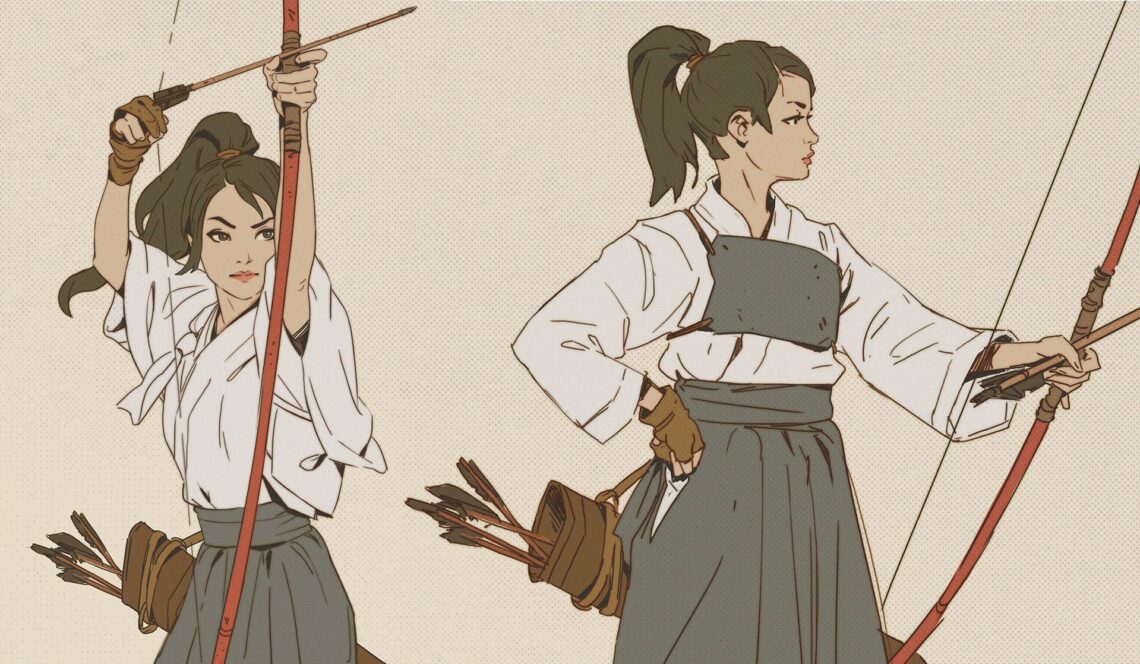
弓道は、永遠に、求道。Kyudo, an endless search for the truth.
Kyudo − The Way of the Bow
Kyūdō (Japanese: 弓道) is the Japanese martial art of archery. Kyūdō is based on kyūjutsu (“art of archery”), which originated with the samurai class of feudal Japan.[1] In 1919, the name of kyūjutsu was officially changed to kyūdō, and following the example of other martial arts that have been systematizing for educational purposes, kyūdō also reorganized and integrated various forms of shooting that had been used up until then. High level experts in kyūdō may be referred to as kyūdōka (弓道家)(Kyudo Master) and some practitioners may refer to themselves as yumihiki (弓引き), or ‘bow puller’. Kyūdō is practised by thousands of people worldwide. As of 2005, the International Kyudo Federation had 132,760 graded members. The bow they use is called a yumi (弓), and the most common one has an asymmetrical shape of more than 2.0 metres (6 ft 7 in), and is characterized by the archer holding the part of the bow below the center to shoot the arrow.
Kyūdō(日語:弓道)是射箭的日本武術。Kyūdō 以kyūjutsu(“射箭藝術”)為基礎,起源於封建日本的武士階級。 1919年,正式將kyūjutsu的名稱改為kyūdō,並以其他武術為教育目的而係統化的武術為榜樣,kyūdō也對當時使用的各種射擊形式進行了重組和整合。kyūdō 的高級專家可能被稱為kyūdōka (弓道家)(弓道大師)和一些練習者可能稱自己為yumihiki (弓引き),或“拉弓者”。全世界有成千上萬的人練習弓道。截至 2005 年,國際弓道聯合會擁有 132,760 名分級會員。他們使用的弓稱為yumi (弓),最常見的弓具有超過 2.0 米(6 英尺 7 英寸)的不對稱形狀,其特點是弓手將弓的一部分握在弓的下方中心射箭。
History
The beginning of archery in Japan is pre-historical. The first images picturing the distinct Japanese asymmetrical longbow are from the Yayoi period (c. 500 BC – 300 AD).
Emergence
The changing of society and the samurai class taking power at the end of the Heian period (794-1185) created a requirement for education in archery. This led to the birth of the first kyūjutsu ryūha (流派, style), the Henmi-ryū (逸見流), founded by Henmi Kiyomitsu (ja:源清光) in the 12th century. The Takeda-ryū (ja:武田流) and the mounted archery school Ogasawara-ryū (ja:小笠原流) were later founded by his descendants. The need for archers grew dramatically during the Genpei War (1180–1185) and as a result the founder of the Ogasawara-ryū (Ogasawara Nagakiyo), began teaching yabusame (mounted archery).[8]
During the Kamakura period (1185-1333), when Minamoto no Yoritomo established the Kamakura shogunate, archery became more and more popular, especially the three types of mounted archery: yabusame, inuoumono, and kasagake.
Sengoku period
From the 15th to the 16th century, Japan was ravaged by civil war. In the latter part of the 15th century Heki Danjō Masatsugu revolutionized archery with his new and accurate approach called hi, kan, chū (fly, pierce, center), and his footman’s archery spread rapidly. Many new schools were formed, some of which remain today, such as Heki-ryū Chikurin-ha (ja:日置流竹林派), Heki-ryū Sekka-ha (日置流雪荷派) and Heki-ryū Insai-ha (日置流印西派).
16th century
The yumi (Japanese bow) as a weapon of war began its gradual decline after the Portuguese arrived in Japan in 1543 bringing firearms with them in the form of the matchlock. The Japanese soon started to manufacture their own version of the matchlock called tanegashima and eventually it and the yari (spear) became the weapons of choice. However, because tanegashima took a long time to load, were inconvenient in rainy weather when damp gunpowder would not fire, and were not exactly subtle in terms of noise, the yumi did not go out of fashion and continued to be used as an important military force on the battlefield.The tanegashima however did not require the same amount of training as a yumi, allowing Oda Nobunaga’s army consisting mainly of farmers armed with tanegashima to annihilate a traditional samurai archer cavalry in a single battle in 1575.
歷史
日本射箭的起源是史前時期。描繪獨特的日本不對稱長弓的第一張圖片來自彌生時代(約公元前 500 年 – 公元 300 年)。
出現
平安時代末期(794-1185)社會的變遷和武士階級的掌權,對射箭教育提出了要求。這導致了第一個 kyūjutsu ryūha (流派,風格)的誕生,Henmi-ryū(逸見流),由 Henmi Kiyomitsu(ja:源清光)在 12 世紀創立。[7]武田流(武田流)和騎射學校小笠原流(武田流)後來由他的後代創立。在源平戰爭(1180-1185 年)期間,對弓箭手的需求急劇增長,因此小笠原流 ( Ogasawara-ryū)的創始人(Ogasawara Nagakiyo),開始教授流式射箭(騎馬射箭)。
鎌倉時代(1185-1333年),源賴朝建立鎌倉幕府後,射箭開始流行起來,尤其是三種騎射:流鏑馬、犬王物和笠岳。
戰國時期
15至16世紀,日本飽受內戰蹂躪。在 15 世紀後期,Heki Danjō Masatsugu以他稱為hi、kan、chū (飛、刺、中)的新準確方法徹底改變了射箭術,他的僕人射箭迅速傳播開來。許多新學校成立,其中一些保留至今,例如日置流竹林派(日置流竹林派)、日置流雪荷派(日置流雪荷派) 和日置流雪荷派 (日置流雪荷派)日置流印西派)。
16 世紀
1543 年葡萄牙人帶著火繩槍抵達日本後,弓箭(日本弓)作為一種戰爭武器開始逐漸衰落。[10]日本人很快開始製造他們自己的火繩槍版本,稱為tanegashima,最終它和yari(長矛)成為首選武器。但是,由於種子島的裝載時間長,在潮濕的火藥無法發射的雨天不方便,而且噪音也不是很微妙,所以由彌號並沒有過時,繼續作為重要的軍事裝備使用戰場上的力量。然而,種子島不需要像 yumi 一樣多的訓練,這使得織田信長的主要由農民組成的軍隊用種子島武裝在1575 年的一場戰鬥中殲滅了傳統的武士弓騎兵。
Edo period
During the Edo period (1603–1868) Japan was turned inward as a hierarchical caste society in which the samurai were at the top. There was an extended era of peace during which the samurai moved to administrative duty, although the traditional fighting skills were still esteemed. During this period archery became a “voluntary” skill, practised partly in the court in ceremonial form, partly as different kinds of competition. During this period, an archery contest called Tōshiya was popularly held at the Buddhist temple Sanjusangen-do. Many samurai competed to hit an arrow at a target 133 meters away, nearly the width of the Buddhist temple.[5] Today, this Tōshiya contest is held as an annual event on Coming of Age Day, January 15, with women archers participating, but with the distance to the target shortened to 60 meters
In the early Edo period, Morikawa Kōzan founded the Yamato-ryū (ja:大和流), which was based on Ogasawara-ryū etiquette and Heki-ryū shooting methods, and also incorporated Shinto ideas.
江戶時代
在江戶時代(1603-1868 年),日本轉向內向,成為武士居於頂端的等級制度社會。有一個延長的和平時代,在此期間武士開始擔任行政職務,儘管傳統的戰鬥技能仍然受到尊重。在此期間,射箭成為一種“自願”技能,部分以儀式形式在法庭上練習,部分作為不同類型的比賽。在此期間,在佛教寺廟三十三間堂舉行了名為Toshiya的射箭比賽。眾多武士競相將箭射向133米外的靶子,接近佛寺的寬度。[5]今天,這個Toshiya比賽在 1 月 15 日成年日作為年度活動舉行,女性弓箭手參加,但到目標的距離縮短到 60 米。
Revival
During the changes to Japan brought by opening up to the outside world at the beginning of the Meiji era (1868–1912), the samurai lost their status. Therefore, kyūjutsu was considered obsolete and began to decline. Kyūjutsu practitioners established dojos to survive and began to spread among the common people. Kyūjutsu was first adopted as a subject in school education in 1895, encouraged by its beginning to spread among the common people. In 1896, a group of kyūjutsu masters gathered to save traditional archery. Honda Toshizane, the kyūjutsu teacher for the Imperial University of Tokyo, merged the war and ceremonial shooting styles, creating a hybrid called Honda-ryū (ja:本多流生弓会). In 1919, the name of “kyūjutsu” was officially changed to “kyūdō”, and following the example of other martial arts that have been systematizing for educational purposes, kyūdō also reorganized and integrated various forms of shooting that had been used up until then. In 1949, the All Nippon Kyudo Federation (全日本弓道連盟, Zen Nihon Kyūdō Renmei), or ANKF, was formed and the current practice of Kyūdo was almost completed. Guidelines published in the 1953 book Kyudo Manual[12] (弓道教本, kyūdō kyohon) define how, in a competition or graduation, archers from different schools can shoot together in unified form.
復興
在明治初期(1868-1912)日本對外開放帶來的變化中,武士失去了地位。因此,kyūjutsu被認為過時並開始衰落。Kyūjutsu修行者建立道場以求生存,並開始在平民百姓中傳播。Kyūjutsu 於 1895 年首次被納入學校教育,受到它開始在普通民眾中傳播的鼓舞。 1896年,一群kyūjutsu大師聚集在一起拯救傳統射箭。東京帝國大學的 kyūjutsu 老師 Honda Toshizane融合了戰爭和禮儀射擊風格,創造了一種名為Honda-ryū的混合體(ja:本多流生弓會)。1919年,“弓術”正式更名為“弓道”,弓道也效法其他武術系統化教育,對沿用至今的各種射擊方式進行了重組整合。1949 年,全日本弓道聯合會(全日本弓道連盟,Zen Nihon Kyūdō Renmei)或 ANKF 成立,目前的弓道實踐幾乎完成。 1953 年出版的《弓道手冊》[(弓道教本, kyūdō kyohon )中的指南定義在比賽或畢業典禮上,來自不同學校的弓箭手如何以統一的形式一起射擊。
Purpose
Kyūdō is practiced in many different schools, some of which descend from military shooting and others that descend from ceremonial or contemplative practice. Therefore, the emphasis is different. Some emphasize aesthetics and others efficiency. Contemplative schools teach the form as a meditation in action. In certain schools, to shoot correctly will result inevitably in hitting the desired target. For this a phrase seisha hicchū (正射必中), “true shooting, certain hitting”, is used.
Kyūdo 在許多不同的流派中都有實踐,其中一些源自軍事射擊,另一些則源自儀式或冥想練習。因此,側重點不同。有些強調美觀,有些則強調效率。默觀學校將這種形式作為一種行動中的冥想來教授。在某些學校,正確射擊將不可避免地擊中所需的目標。為此,使用了一個短語seisha hicchū(正射必中),“真正的射擊,一定的命中”。
According to the Nippon Kyūdō Federation the supreme goal of kyūdō is the state of shin-zen-bi (真善美), roughly “truth-goodness-beauty”, which can be approximated as: when archers shoot correctly (i.e. truthfully) with virtuous spirit and attitude toward all persons and all things which relate to kyūdō (i.e. with goodness), beautiful shooting is realized naturally.
根據 Nippon Kyūdō Federation 的說法,kyūdō 的最高目標是shin-zen-bi (真善美)的狀態,大致是“真善美”,可以近似為:當弓箭手正確射擊時(即真實地)以善良的精神和態度對待與kyūdō(即善良)有關的所有人和事物,自然會實現美麗的拍攝。
Kyūdō practice, as in all budō, includes the idea of moral and spiritual development. Today many archers practice kyūdō as a sport, with marksmanship being paramount. However, the goal most devotees of kyūdō seek is seisha seichū (正射正中), “correct shooting is correct hitting”. In kyūdō the unique action of expansion (nobiai; 伸合い) that results in a natural release, is sought. When the technique of the shooting is correct the result is that the arrow hits the target. To give oneself completely to the shooting is the spiritual goal, achieved by perfection of both the spirit and shooting technique leading to munen musō (無念無想), “no thoughts, no illusions”. This however is not Zen, although Japanese bow can be used in Zen-practice or kyūdō practiced by a Zen master. In this respect, many kyūdō practitioners believe that competition, examination, and any opportunity that places the archer in this uncompromising situation is important, while other practitioners will avoid competitions or examinations of any kind.
與所有武道一樣,弓道練習包括道德和精神發展的理念。今天,許多弓箭手將弓道作為一項運動來練習,槍法是最重要的。然而,大多數弓道愛好者追求的目標是正射正中,“正確的射擊就是正確的擊中”。在 kyūdō 中,尋求導致自然釋放的獨特的擴張行動(nobiai ; 伸合い)。當射擊技術正確時,結果是箭擊中了目標。將自己完全投入到拍攝中是精神目標,通過精神和拍攝技術的完美實現,從而達到munen musō(無念無想),“沒有思想,沒有幻想”。然而這不是禪, 雖然日本弓可以用於禪宗練習或禪師練習的 kyūdō。在這方面,許多 kyūdō 練習者認為比賽、考試和任何讓弓箭手處於這種不妥協情況的機會都很重要,而其他練習者會避免任何形式的比賽或考試。
Since the Second World War, kyūdō has often been associated with Zen Buddhism. But not all kyūdō schools include a religious or spiritual component. This popular view is likely the result of a single book Zen in the Art of Archery (1948) by the German author Eugen Herrigel. Herrigel spoke only a little Japanese, generally using a translator to speak with his teacher. His view on kyūdō was in part due to mis-communication and also to his exposure to a contemplative form of kyūdō. Even so, Herrigel’s book, when translated into Japanese in 1956, had a huge impact on perception of kyūdō also in Japan.
自第二次世界大戰以來,弓道經常與禪宗聯繫在一起。但並非所有弓道流派都包含宗教或精神成分。這種流行的觀點很可能是德國作家Eugen Herrigel的一本書《射箭藝術中的禪》 (1948 年)的結果。Herrigel 只會說一點日語,一般都是通過翻譯與他的老師交談。他對弓道的看法部分是由於溝通不暢以及他接觸了一種沉思的弓道形式。即便如此,Herrigel 的書在 1956 年被翻譯成日文時,對日本的弓道也產生了巨大影響。
Zenko (a Heki Ryu Bishu Chikurin-ha school of kyūdō) is affiliated closely with Shambhala Buddhism and has groups in the United States, Canada and Europe.
Zenko(Kyūdō 的 Heki Ryu Bishu Chikurin-ha 學校)與Shambhala Buddhism密切相關,在美國、加拿大和歐洲都有團體。
Dōjō
Kyūdō dōjō (training halls, aka “kyūdōjō”) vary in style and design from school to school, and from country to country. In Japan, most dōjō have roughly the same layout; an entrance, a large dōjō area, typically with a wooden floor and a high ceiling, a position for practice targets (called makiwara; 巻藁), and a large open wall with sliding doors, which, when opened, overlooks an open grassy area and a separate building, the matoba (的場), which houses a sand hillock and the targets, placed 28 metres from the dōjō floor.
道場
Kyūdō dōjō(訓練館,又名“kyūdōjō”)的風格和設計因學校和國家而異。在日本,大多數道場的佈局大致相同;一個入口,一個大的 dōjō 區域,通常有木地板和高高的天花板,一個練習目標的位置(稱為makiwara ;巻藁),以及一個帶有滑動門的大開放式牆壁,當打開時,可以俯瞰開闊的草地和一個單獨的建築,場(的場),裡面有一個沙丘和靶子,距離道場地板 28 米。
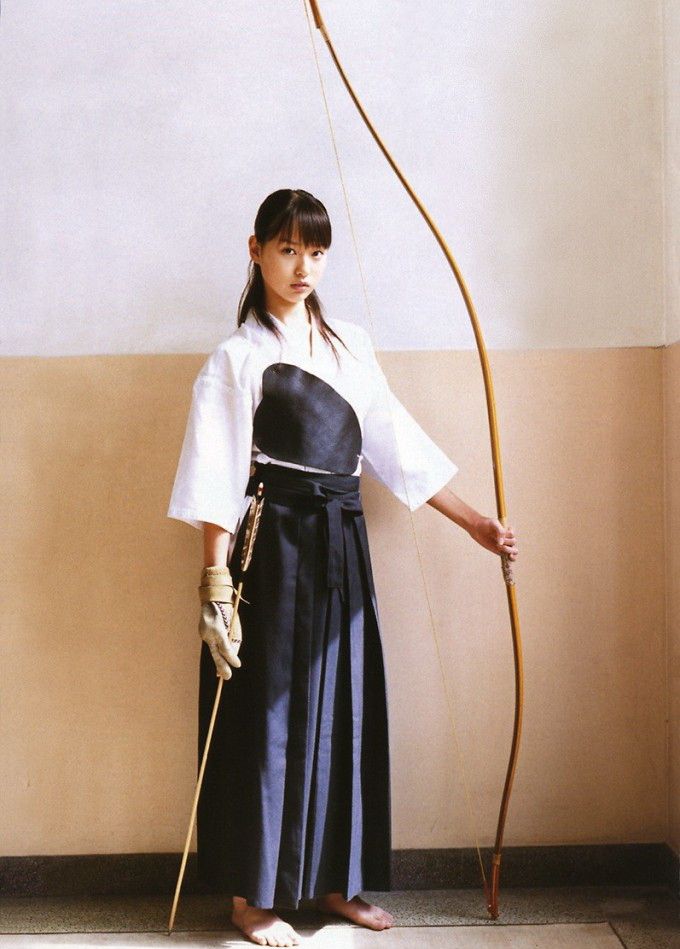
Practice
Kyūdō is practiced in different schools and styles, and even between dōjō of the same style, the form of practice can vary. To harmonize practice and ceremonial shooting (sharei; 的礼) in 1953 the All Nippon Kyūdō Federation (ANKF) formed an establishing committee from the main schools to take the best elements of each school and form the ANKF style that is used today throughout Japan and in most kyūdō federations in the west.
In kyūdō there are three kinds of practice (keiko; 稽古): mitori geiko (見取り稽古) – receiving with the eyes the style and technique of an advanced archer, kufū geiko (工夫稽古) – learning and keeping in mind the details of the technique and spiritual effort to realize it and kazu geiko (数稽古) – repetition through which the technique is personified in one’s own shooting.
Beginners start with a rubber practice bow and by practising the movements of hassetsu (八節). The second step for a beginner is to do karabiki (空引) training with a bow without an arrow to learn handling of the bow and performing hassetsu until full draw. Handling and maintenance of the equipment is also part of the training. After given permission by the teacher beginners start practicing with the glove and arrow. Next steps may vary from teacher to teacher, but include practising first yugamae (弓構え), then the draw and last release and shooting at makiwara. A beginner starting to shoot at the mato (的) may be asked to shoot from half or three-quarters of the usual distance.
Advanced beginners and advanced shooters practice shooting at makiwara, mato and some with omato.
A kyūdō practitioner shooting at a makiwara
Makiwara is a specially designed straw target (not to be confused with makiwara used in karate). The makiwara is shot at from a very close range (about seven feet, or the length of the archer’s strung yumi when held horizontally from the centerline of the archer’s body). Because the target is so close and the shot most certainly will hit, the archer can concentrate on refining technique rather than on the arrow’s arc.
Mato is the normal target for most kyūdō practitioners. Mato sizes and shooting distances vary, but most common is hoshi mato (星的) thirty-six centimeters (or 12 sun, a traditional Japanese measurement equivalent to approximately 3.03 cm) in diameter shot at from a distance of twenty-eight metres. For competitions and examinations, kasumi mato (霞的) is used. For ceremonies it is most common to use hoshi mato which is the same as kasumi mato but with different markings.
Omato is the mato used for long distance enteki (遠的) shooting at 60 m distance. The diameter of omato is 158 cm. There are separate competitions also for enteki shooting.
There are three levels of skill:
Tōteki, the arrow hits the target.
Kanteki, the arrow pierces the target.
Zaiteki (在的), the arrow exists in the target.
練習
弓道在不同的流派和流派中練習,即使在相同流派的道場之間,練習的形式也會有所不同。為了在 1953 年協調練習和儀式射擊(sharei;的禮),全日本 Kyūdō 聯合會 (ANKF) 成立了一個由主要學校組成的成立委員會,以吸收每個學校的最佳元素,形成今天在日本和日本使用的 ANKF 風格在西方的大多數kyūdō聯盟中。
在 kyūdō 中有三種練習 ( keiko ; 稽古): mitori geiko (見取り稽古) – 以眼睛接受高級射手的風格和技術, kufū geiko (工夫稽古) – 學習並記住射箭的細節實現它的技術和精神努力以及kazu geiko(數稽古)——重複,通過這種重複,技術在自己的射擊中被人格化。
初學者從練習橡皮弓開始,練習八節的動作。初學者的第二步是用沒有箭的弓進行karabiki (空引) 訓練,以學習對弓的處理和執行hassetsu直到拉滿為止。設備的處理和維護也是培訓的一部分。在得到老師的許可後,初學者開始用手套和箭練習。接下來的步驟可能因老師而異,但包括首先練習yugamae (弓構え),然後是抽籤和最後一次釋放以及在makiwara射擊。初學者可能會被要求從通常距離的一半或四分之三開始射擊 mato (的)。
高級初學者和高級射手在makiwara、mato和一些omato練習射擊。
Makiwara是一種特別設計的稻草靶(不要與空手道中使用的makiwara混淆)。makiwara是從非常近的距離(大約七英尺,或者從弓箭手身體的中心線水平握住弓箭手的yumi弦的長度)射出的。因為距離很近,射中必中,射手可以專心於技巧的精煉,而不是箭的弧度。
Mato是大多數kyūdō練習者的正常目標。Mato 的大小和射擊距離各不相同,但最常見的是hoshi mato(星的)直徑為 36 厘米(或 12太陽,日本的傳統測量值,相當於約 3.03 厘米),距離為 28 米。對於比賽和考試,使用kasumi mato (霞的)。對於儀式,最常見的是使用hoshi mato ,它與kasumi mato相同,但標記不同。
Omato是用於在 60 m 距離遠距離enteki(遠的)射擊的mato 。番茄的直徑為158厘米。enteki 射擊也有單獨的比賽。
技能分為三個等級:
Tōteki,箭射中目標。
Kanteki,箭頭刺穿目標。
Zaiteki(在的),箭頭存在於目標中。
Equipment
The Yumi (弓, lit. the “[Japanese] Bow”) is exceptionally tall (standing over two metres), surpassing the height of the archer. Yumi shafts are traditionally made of bamboo, wood and leather using techniques which have not changed for centuries, although some archers (particularly, those new to the art) may use synthetic (i.e. laminated wood coated with glassfibre or carbon fiber) yumi. Even advanced practitioners may own non-bamboo bows and arrows because of the vulnerability of bamboo equipment to extreme climates. The suitable height for the bow depends on the archer’s draw (yazuka; 矢束) which is about half the archer’s height.
Ya (矢, lit. “[Japanese] Arrow”) shafts (Yagara (簳, lit. “Arrow Shaft”)) are traditionally made of bamboo, with either eagle or hawk feathers (Hane (羽, lit. “Feather(s)”)). Most ya shafts today are still made of bamboo (although some archers will use shafts made of aluminium or carbon fibres), and ya feathers are now obtained from non-endangered birds such as turkeys or swans. The length of an arrow is the archer’s yatsuka plus 6–10 centimetres. Every ya has a spinning direction being made from feathers from alternate sides of the bird, the haya spins clockwise upon release while the otoya spins counter-clockwise. Kyūdō archers usually shoot two ya per round, with the haya being shot first (haya (甲矢) means first arrow; otoya (乙矢) means second arrow). It is often said that the alternate spinning direction of the arrows would prevent two consecutive identically shot arrows from flying identically and thus colliding. The arrowhead is called a Yajiri (鏃, lit. “Arrowhead”). Ya are normally kept in a cylindrical quiver, called a Yazutsu (矢筒, lit. “[Japanese] Arrow Barrel”), with ceremonial and traditional archers using the Yebira (箙, lit. the “[Japanese] Quiver (of Arrows)”).
設備
Yumi (弓,點燃“[日本]弓”)非常高(站立超過兩米),超過弓箭手的高度。Yumi箭桿傳統上由竹子、木材和皮革製成,使用的技術幾個世紀以來都沒有改變,儘管一些弓箭手(尤其是那些剛接觸該技術的人)可能會使用合成材料(即塗有玻璃纖維或碳纖維的層壓木)yumi。由於竹製設備易受極端氣候的影響,即使是高級從業者也可能擁有非竹製弓箭。弓的合適高度取決於弓箭手的拉力(yazuka; 箭束),大約是弓箭手身高的一半。
Ya(矢,點亮“[日本]箭”)軸( Yagara (簳,點亮“箭頭軸”))傳統上由竹子製成,帶有鷹或鷹的羽毛( Hane (羽,點亮“羽毛(s) )”))。今天大多數亞箭桿仍然是用竹子製成的(儘管一些弓箭手會使用鋁或碳纖維製成的箭桿),而亞羽現在是從火雞或天鵝等非瀕危鳥類身上獲得的。箭的長度是射手的八塚加 6-10 厘米。每個你旋轉方向由鳥的交替兩側的羽毛製成,haya在釋放時順時針旋轉,而otoya逆時針旋轉。Kyūdō 弓箭手通常每輪射兩次矢,先射haya ( haya(甲箭)表示第一支箭;otoya(乙箭)表示第二支箭)。人們常說,箭頭的交替旋轉方向可以防止兩個連續的相同射出的箭頭以相同的方式飛行並因此發生碰撞。箭頭稱為Yajiri (鏃,點燃。“箭頭”). Ya 通常保存在一個圓柱形箭袋中,稱為Yazutsu(矢筒,點燃。“[日本] 箭筒”),禮儀和傳統弓箭手使用Yebira(箭,點燃。“[日本]箭袋(箭)” )。
The kyūdō archer wears a glove on the right hand, called a Yugake (弽, lit. “Yumi gloves”). There are many varieties of yugake; they are typically made of deerskin. Practitioners can choose between a hard glove (with a hardened thumb) or a soft glove (without a hardened thumb); each has its advantages.
With a hard glove, the thumb area is not very flexible and has a pre-made groove used to pull the string (Tsuru (弦, lit. “Yumi bowstring”)). With a soft glove, the thumb area is very flexible and is without a pre-made groove, allowing the practitioners to create their own, based on their own shooting habits.
Typically a yugake will be of the three- or four-finger variety. The three fingered version is called a mitsugake (三つ弽), and the four-fingered version is called a yotsugake (四つ弽). Typically the primary reason an archer may choose a stronger glove like the yotsugake is to assist in pulling heavier bows (18–20 kg (40–44 lb) and above). The three-fingered glove is generally used with bows with a pull below 20 kilograms of draw weight, while the four fingered yotsugake are used with bows with a pull above 20 kilograms. This is only a generalization and many schools differ on which glove to use for their bows and glove use often varies from archer to archer and school to school.
kyūdō 弓箭手右手戴手套,稱為Yugake (弽,點燃。“Yumi手套”)。yugake有很多種;它們通常由鹿皮製成。從業者可以選擇硬手套(拇指變硬)或軟手套(拇指不變硬);每個都有其優點。
使用硬手套時,拇指區域不是很靈活,並且有一個用於拉弦的預製凹槽(Tsuru (弦,點亮“ Yumi bowstring ”))。使用柔軟的手套,拇指區域非常靈活,沒有預製凹槽,讓練習者可以根據自己的射擊習慣創建自己的凹槽。
通常,yugake是三指或四指的。三指版本稱為mitsugake (三つ弽),四指版本稱為yotsugake (四つ弽)。通常情況下,弓箭手可能會選擇像yotsugake這樣更結實的手套的主要原因是為了幫助拉更重的弓(18-20 公斤(40-44 磅)及以上)。三指套一般用於拉力20公斤以下的弓,四指四指套用於拉力20公斤以上的弓。這只是一個概括,許多學校在弓箭使用哪種手套上有所不同,並且手套的使用通常因射手而異,因學校而異。
The practical reasoning for the extra finger on the glove stems from having more surface area available to the archer for the heavier draws. During the draw, the thumb of the archer is typically placed on the last gloved finger of the drawing hand, with the first (or, in the case of a yotsugake, the first and index fingers) being placed gently on either the thumb or the arrow shaft itself. Sometimes a type of resin powder, called giriko (ぎり粉), is applied to the thumb and holding finger to assist in the grip during the pull. The extra finger allows for a stronger hold on the thumb, as it is then placed on the third finger of the hand instead of the second. Some schools, such as Heki-ryū Insai-ha only use the three-fingered glove, even with bows above 40 kilograms.
The one-finger glove, called an ippongake (一本粉), is generally used for beginners and covers only the thumb. Some versions have a full wrist covering and others simply cover the thumb with a small strap and snap around the wrist. Because it has no glove over the fingers, it is typically uncomfortable for the archer to use giriko powder. Ippongake are generally not used by advanced archers, and cannot be used in Kyūdō Federation competitions.
The five-finger glove, called a morogake (諸粉), is used almost exclusively by Ogasawara Ryū practitioners, and is not typically used in competition or by any other school.
A practitioner’s nock and grip of the arrow can be dictated by the glove and bow being used. It is not uncommon for practitioners who have upgraded or downgraded bow weight to continue to use the same glove and not change.
With the exception of the ippongake, the yugake is worn with an underglove called a shitagake (下粉) made of cotton or synthetic cloth, mainly to protect the yugake from sweat which would degrade the deerskin of the glove over time. The shitagake comes in two varieties, three-fingered and four-fingered, depending on whether it is used under the mitsugake or the yotsugake.
手套上額外手指的實際原因是弓箭手可以使用更多的表面積來進行更重的拉力。在拉弓過程中,弓箭手的拇指通常放在拉弓手戴手套的最後一根手指上,第一根(或者,如果是 yotsugake ,第一指和食指)輕輕放在拇指或拉弓手上箭桿本身。有時,將一種稱為giriko (ぎり粉) 的樹脂粉末塗在拇指和握指上,以在拉動過程中幫助抓握。額外的手指可以更牢固地握住拇指,因為它會放在第三根手指上手的手指而不是第二個。有的流派,比如平流印齋派,即使是40公斤以上的弓,也只用三指手套。
單指手套,稱為ippongake (一本粉),通常用於初學者,只覆蓋拇指。有些版本有完整的手腕覆蓋物,而其他版本則只是用一條小帶子蓋住拇指並扣在手腕上。因為手指上沒有手套,弓箭手使用giriko粉通常會感到不舒服。Ippongake一般不會被高級弓箭手使用,也不能用於 Kyūdo Federation 比賽。
五指手套,稱為morogake(諸粉),幾乎完全由 Ogasawara Ryū 從業者使用,通常不用於比賽或任何其他學校。
練習者的箭尾和箭的握法可以由所使用的手套和弓決定。升級或降級弓重量的練習者繼續使用相同的手套而不改變的情況並不少見。
除ippongake外,yugake穿著名為shitagake (下粉) 的棉質或合成布製成的內衣,主要是為了保護 yugake 免受汗水的侵害,汗水會隨著時間的推移降解手套的鹿皮。Shitagake有兩個品種,三指和四指,具體取決於它是在 mitsugake還是yotsugake下使用。
Because of the unique shooting technique of kyūdō, protection on the left (bow) arm is not generally required. The bow string, when properly released, will travel around the bow hand, coming to rest on the outside of the arm. However, on rare occasions a bow hand glove, called an oshidegake (押手弽), is used, which serves to protect the left thumb from injury from the arrow and fletching. A forearm protector can also be worn, primarily by beginners, to protect the left arm from being hit by the string.
Powder made of burnt rice husks called fudeko (筆粉) is applied to the hand that holds the bow to absorb sweat, allowing the bow to turn in the hand.
Female archers also wear a chest protector called a Muneate (胸当て, lit. “[Yumi] plastron/chestguard”), which is generally a piece of leather or plastic which is designed to protect the breasts from being struck by the bowstring during shooting.
Because repeated usage tends to weaken the bowstring, it is not uncommon for a bowstring to break during shooting. Hence, many archers carry spare strings in what is called a tsurumaki (弦巻; “bow string roll”). Traditional tsurumaki are flat yoyo-shaped carriers made of woven bamboo, typically with a leather strap. Recently, however, plastic tsurumaki are also coming into use.
Many archers also have small containers of fudeko and giriko attached to the end of the tsurumaki strap; these containers are called fudeko-ire (筆粉入れ) and giriko-ire (ぎり粉入れ) and are traditionally made of horn or antler (though many modern archers have fudeko-ire and giriko-ire made of plastic).
由於弓道獨特的射擊技術,一般不需要左(弓)臂保護。弓弦在適當釋放時會繞弓手移動,停在手臂外側。然而,在極少數情況下,會使用一種稱為oshidegake(押手銬)的弓手手套,用於保護左手拇指免受箭和箭矢的傷害。前臂保護器也可以佩戴,主要由初學者佩戴,以保護左臂不被琴弦擊中。
用被稱為筆粉的燒焦稻殼製成的粉末塗在握弓的手上以吸汗,使弓在手中轉動。
女性弓箭手還佩戴一種名為Muneate (胸當テ,字面意思是“[Yumi] plastron / chestguard ”)的護胸,一般是一塊皮革或塑料,旨在保護胸部在射擊時不被弓弦擊中。
由於反複使用會削弱弓弦,因此弓弦在射擊過程中斷裂的情況並不少見。因此,許多弓箭手在所謂的tsurumaki(帶捲;“弓弦卷”)中攜帶備用弦。傳統的tsurumaki是由編織的竹子製成的扁平溜溜球形狀的載體,通常帶有皮革錶帶。然而,最近,塑料鶴卷也開始使用。
許多弓箭手還在鶴卷背帶的末端附有裝著fudeko和giriko的小容器;這些容器稱為fudeko-ire (筆粉入れ) 和giriko-ire (ぎり粉入れ),傳統上由角或鹿角製成(儘管許多現代弓箭手使用塑料製成的 fudeko-ire和giriko-ire )。



